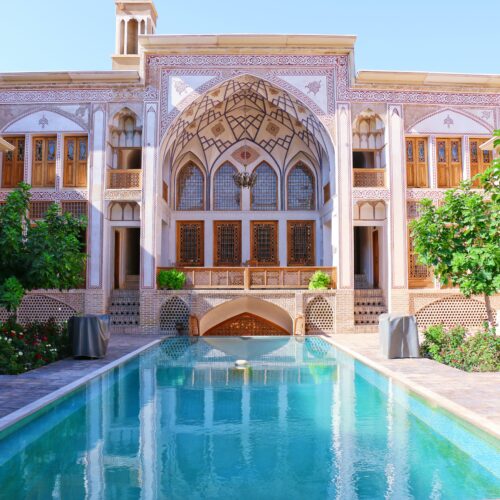Lorem ipsum dolor sit amet, consectetur adipiscing elit. Donec quis nisi vel dui porttitor volutpat. Curabitur vel maximus mauris. Sed in dictum sem.
Iran Attractions


Reedy beds surround Talab-Anzali. Fishing is quite common in this lagoon. These ready beds are not only a shelter for the birds but also a place for growing especial plants used in handicraft’s industry of Gilan

This tomb which is sited in Khozestan is believed to be the Daniel’s tomb. This mausoleum has two courtyards, one of them is bigger than the other. There are two minarets decorated with green tiles on both sides of the entrances of the tomb. This mausoleum attracts thousands of visitors and pilgrims each year. Shush is in the southwest of Khuzastan province 115 Kilometers away from Ahwaz. This ancient city had been the capital of Elamites in ancient times and had been a flourishing and important city until the Islamic period

Based on historical evidence, Eram Garden was established during Saljughid Dynasty era (1037-1193 AC). Accordingly it is of about a 900 years-old history. During Zandiyeh Dynasty (1749-1793 AC) The Garden was inhabited by the local rulers of the time. After Zandiyeh, the chiefs of the Gashghaei tribe used the garden as their private residence, and one of the heads of the tribe named Jaani khan and his son built an edifice in the garden.
During the rule of Nasereddin Shah Qajar (1845-1894) Haj Naser al-Molk, one of Shirazi dignitaries bought th garden from the chiefs of Ghashghaei tribe and built the present beautiful edifice in it.
Before 1963 AC when Shiraz University was appointed in charge of the garden by government it used to be run by different institutions. Since then, Shiraz University has transformed the Garden into a botanical garden in which various plants species and cultivars are grown. In 2011 this garden was registered by UNESCO as a symbol of Iranian garden and found a world wide fame. At the moment, the garden attracts people from all walks of life not only for its historical identity but also as a botanical research center. The beautiful 200 year-old cypress tree (sarv-e-naz) known globally attracts plant lovers to the garden.
Hafez, the great poet from Shiraz point to Eram Garden in some of his poems.
The garden old building which is situated on the west facing the east is a complete example of archetype of mid Qajar era buildings. The building is regarded as a masterpiece of Qajar era which regards to its architecture, paintings, lithography and tiling. The building itself has been built during Nasereddin-Shah rule using the architectural styles of Zand and Safavid era. The construction of this building was ordered by Hasan-Ali khan haj naser-almolk shirazi after demolishing the old building and replacing it by the present one. It is a three storey building with a metal roof. There is portico in front with two columns supporting a flat roof. The tiling used throughout the building known as “seven color tiling” by which sceneries representing the Iranian national story. The main front columns of the building are covered by single piece “Gandomak” slabs of more than two meters high on which poems by famous Iranian Literary figures, Hafez, Saadi and Shooride Shirazi are carved. The Garden panoramic views, the splendid statures of old cypress trees, the aroma of flowers and the ancient buildings attract visitors from all over the world every year.

We go up a magnificent marble staircase to the first floor where some of the rooms have been converted into a museum that can be visited. There is a great variety of exhibits, including porcelain, old carpets, miniatures and illuminated manuscripts, gifts from foreign sovereigns, amours, enameled tableware, ivories, etc. The chief attraction of this museum is the famous Peacock Throne at the very back of the large room. A magnificent ceremonial bed rather than a throne, it was and still is used in the coronation ceremony. The throne is studded with precious stones. It is of Indian manufacture, brought from Delhi in the 18th century by an Iranian expedition under Nader Shah (another tradition claims that it was manufactured at the beginning of the 19th century by order of Fath-Ali Shah, as a present for his favorite. Tavus Khanum-the lady with the peacock)
The splender of Iran, Yassavoli Publication, Tehran

Ice Houses are pointed tall domes, made of clay which are still standing in various parts in Iran especially in provinces of Yazd, Fars, Kerman, Khuzestan, Hormozgan and Sistan.
Ice House is locally called Yakh Dan which is a traditional refrigerator or ice container. Under its tall dome, there is a deep pond for containing ice and cool water. There are a few steps usually between 5 to 10 to take you down to the bottom of the pond to get the cool water and ice out.
It has been primarily built to store the large cubes of ice during the freezing winter days. Its architecture and special construction method, the thick wall and the clay material that is covering each ice house were in a way to isolate the container preventing the warming of the water and the melting of the ice. This ice storage could have been used by the citizens in the hot day of summer.
Ruins of various Ice Houses in some part of Iran have recently been rebuilt and are standing as the legacy of the desert compatible architecture.

